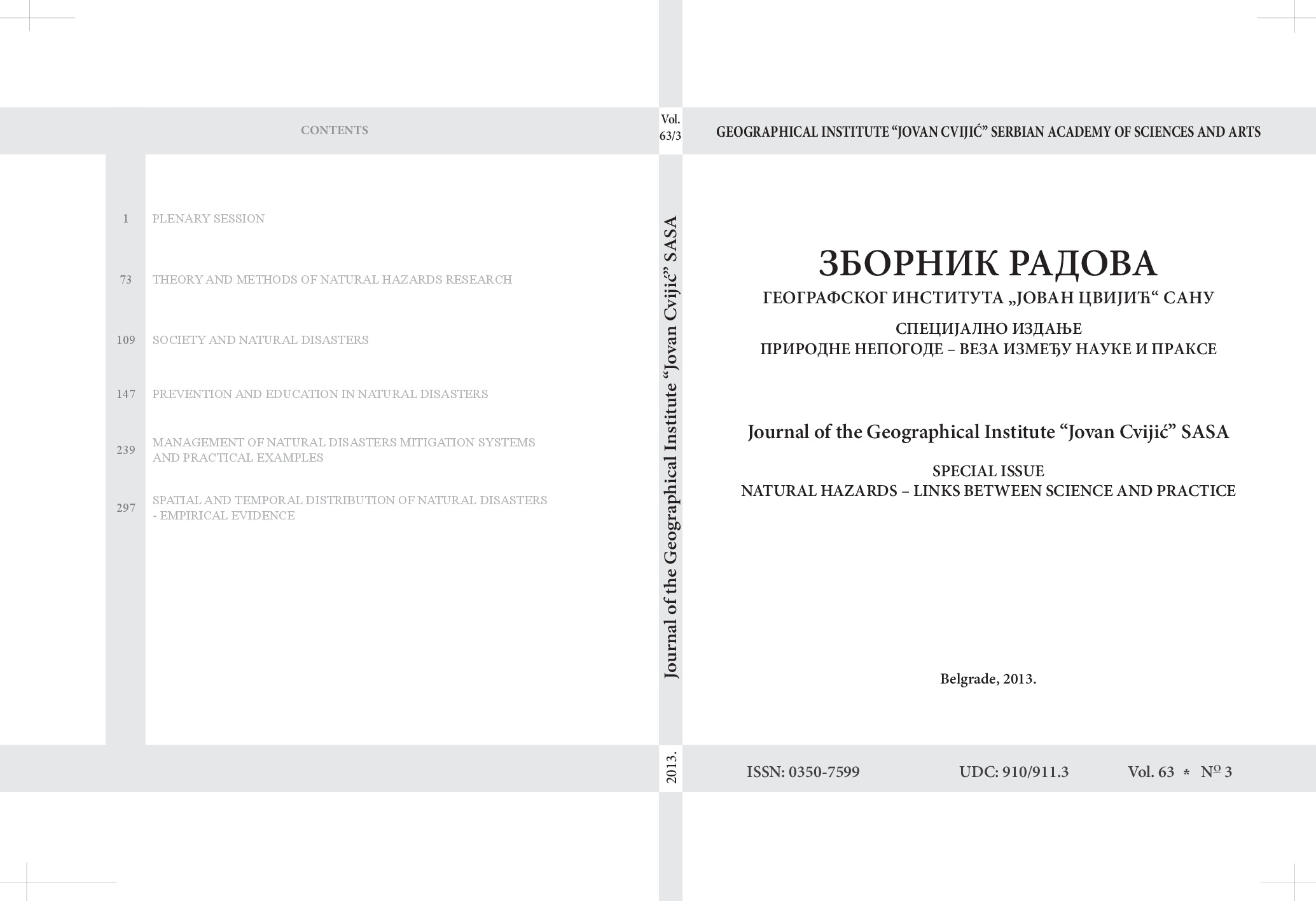Reduction Of Risk Level As One Of The Main Challenges Of Development In Covered Karst Regions
Reduction Of Risk Level As One Of The Main Challenges Of Development In Covered Karst Regions
Author(s): Stanislav A. MakhnatovSubject(s): Geography, Regional studies, Policy, planning, forecast and speculation, Human Ecology
Published by: Географски институт »Јован Цвијић« САНУ
Keywords: karst; risk; sinkhole; structure; protection;
Summary/Abstract: The paper describes the experience of application of the residual karst risk concept, and presents coefficients of karst risk level reduction for planning constructional karst-protection. Practical experience of design for karstified territories of Nizhny Novgorod region demonstrates that special research of the interaction between constructions and foundations is required. Numerous accidents can serve vivid examples proving the need. I2 n this situation it is important to approach the issue of safety in a proper way, taking into account probable economic, environmental and social damage. The problem can be solved by introduction of the karst risk level parameter, which permits to take into consideration constructional characteristics of objects (design philosophy, service life), as well as conditions and mechanisms of interaction between the foundation and the construction (sinkholes, local subsidence, karst-suffosion deformations, etc.). The importance of risk reduction is highlighted by current Russian Federal laws. Depending on karst risk level adequate karst-protection should be performed. For building projects, reduction of karst risk to a permissible level (conventionally equal to 1) is one of the most important research challenges of the karstified territories development, and its solution permits to plan appropriate karst protection measures.
Journal: Зборник радова Географског института "Јован Цвијић" САНУ
- Issue Year: 63/2013
- Issue No: 3
- Page Range: 255-268
- Page Count: 14
- Language: English

